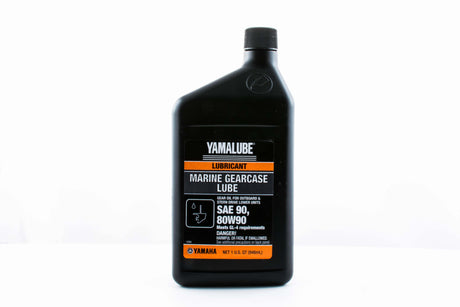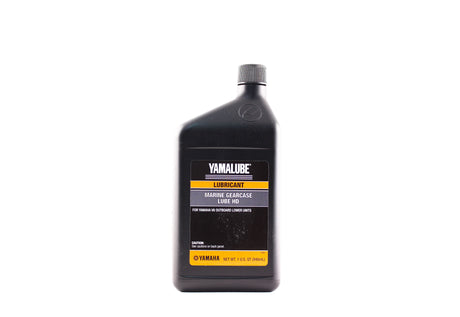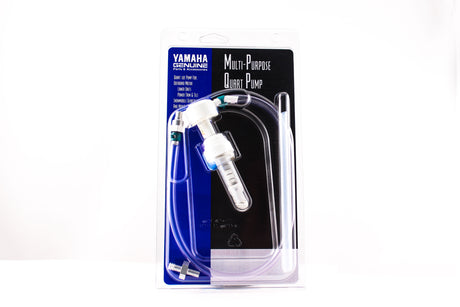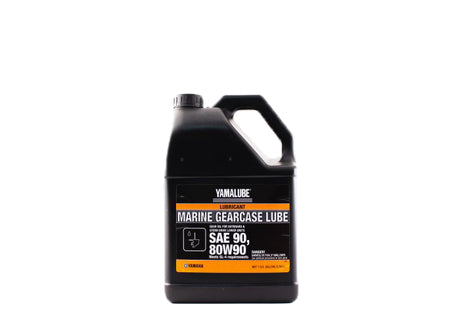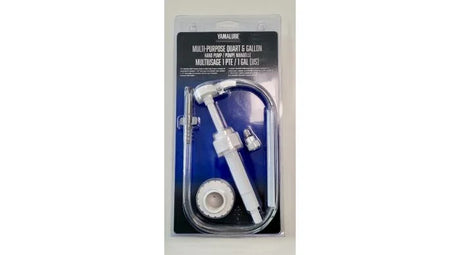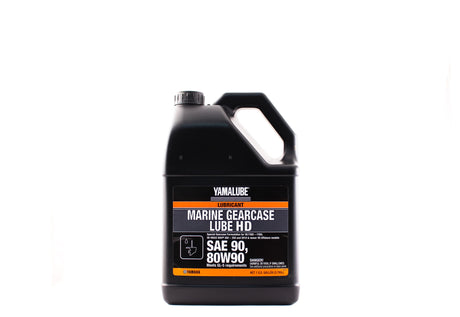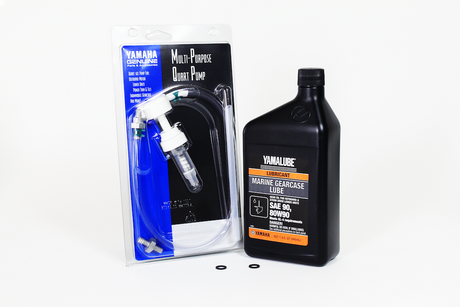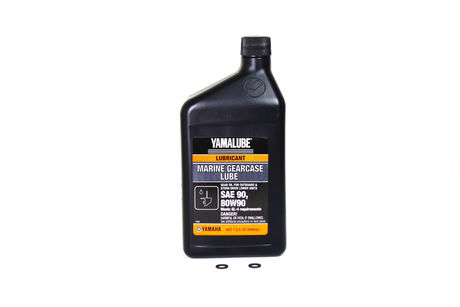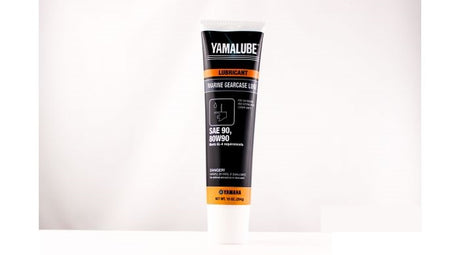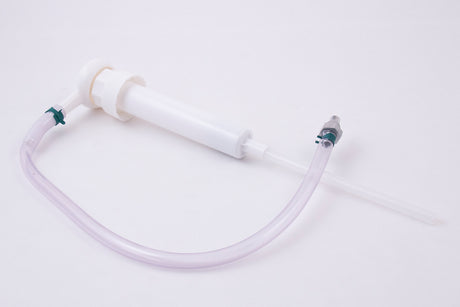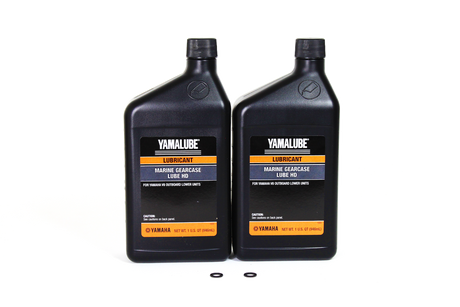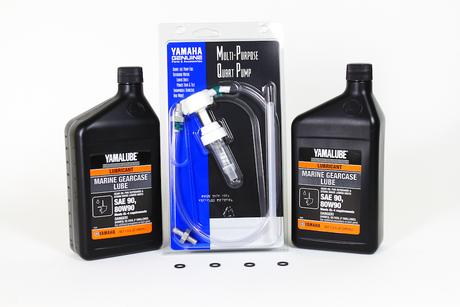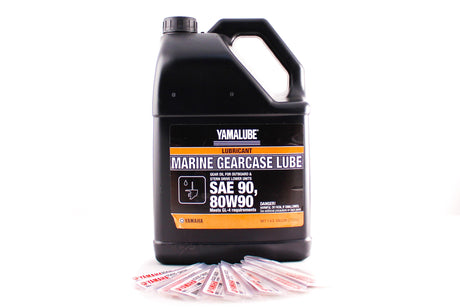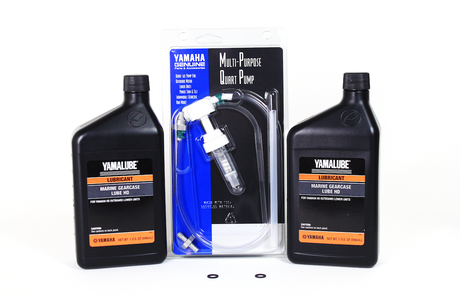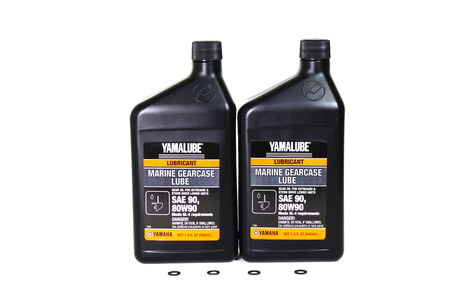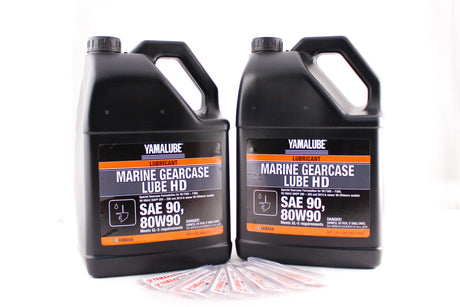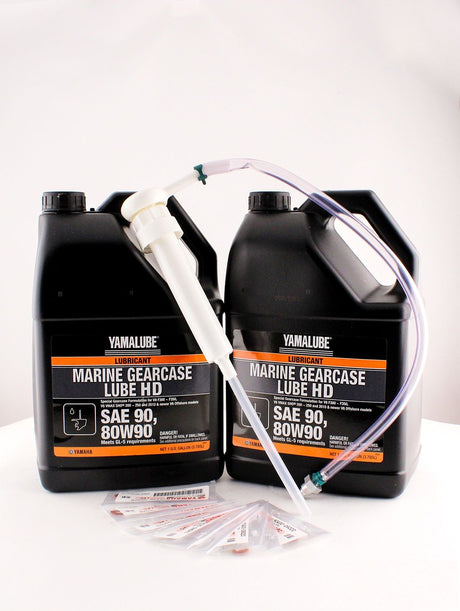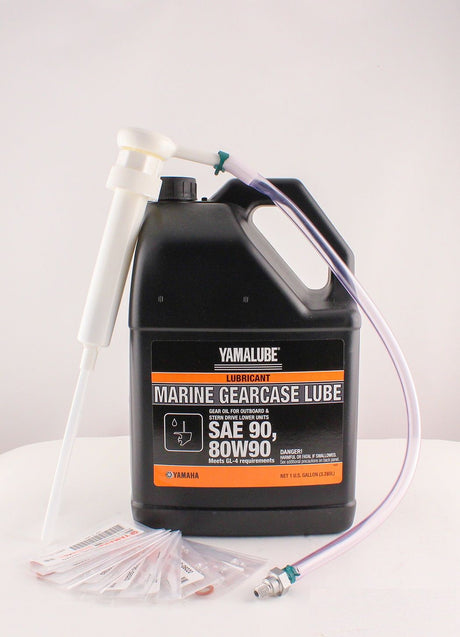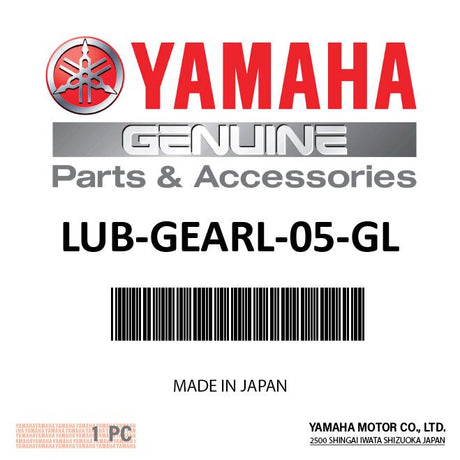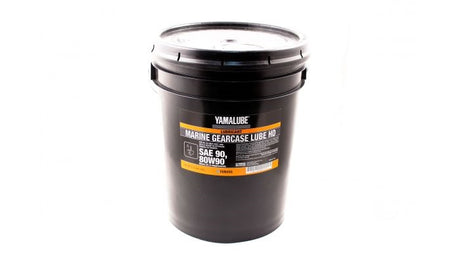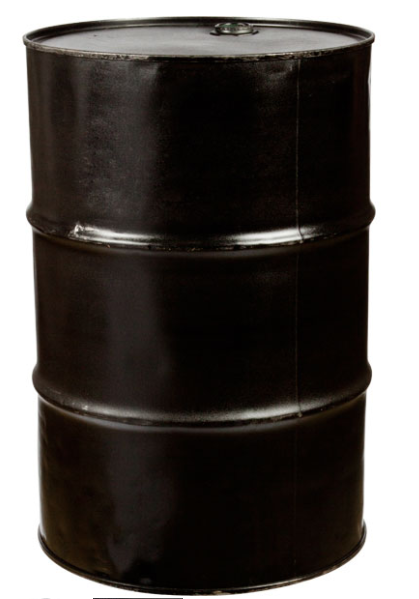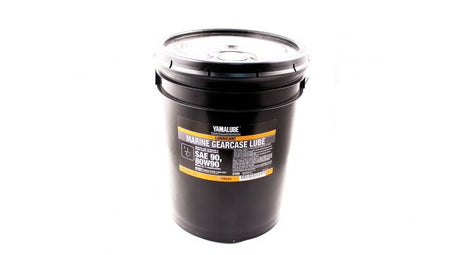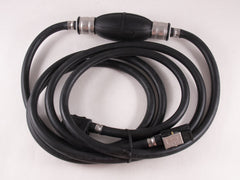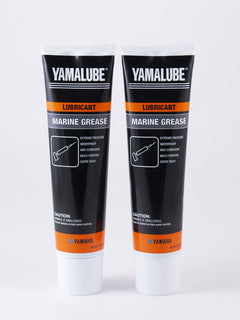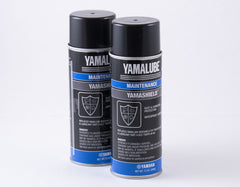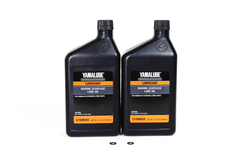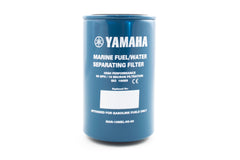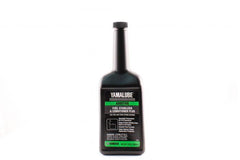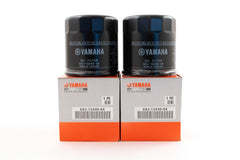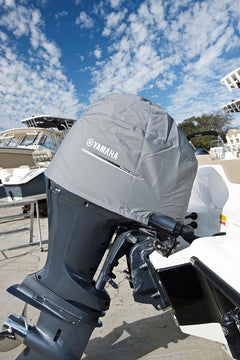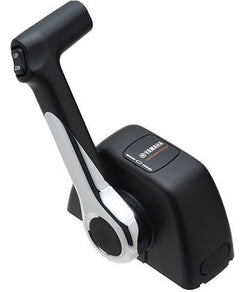Yamaha
Yamaha ACC-GEARL-UB-QT - Yamalube Marine Gear Case Lube Oil - 32 oz.
$13.60 USD$14.55 USDUnit price /UnavailableYamaha
Yamaha ACC-GLUBE-HD-QT - Yamalube 4.2L V6 V8 VMAX SHO Marine Gear Case Lube Oil HD
$13.68 USD$14.65 USDUnit price /UnavailableYamaha
Yamaha ACC-PUMP0-00-QT - Lower Unit Gear Case Lube Oil Quart Pump Multi-Purpose
$26.04 USD$26.99 USDUnit price /UnavailableYamaha
Yamaha ACC-GEARL-UB-GL - Yamalube Marine Gear Case Lube Oil - 1 Gallon
$38.49 USD$41.50 USDUnit price /UnavailableYamaha
Yamaha ACC-HNDPU-MP-01 - Multi-Purpose Quart & Gallon Pump
$25.16 USD$26.99 USDUnit price /UnavailableYamaha
Yamaha ACC-GLUBE-HD-GL - Yamalube 4.2L V6 V8 VMAX SHO Marine Gear Case Lube Oil HD - 1 Gallon
$42.75 USD$46.15 USDUnit price /UnavailableYamaha
$26.63 USDUnit price /UnavailableYamaha
$16.64 USDUnit price /UnavailableYamaha
Yamaha ACC-GEARL-UB-10 - Yamalube Marine Gear Lube - 10 OZ
$10.99 USD$11.90 USDUnit price /UnavailableYamaha
Yamaha ACC-PUMP0-02-GL - Multipurpose Gallon Gear Lubes Oil Pump
$25.16 USD$26.99 USDUnit price /UnavailableYamaha
$30.40 USDUnit price /UnavailableYamaha
$43.27 USDUnit price /UnavailableYamaha
$53.69 USDUnit price /UnavailableYamaha
$40.39 USDUnit price /UnavailableYamaha
$33.28 USDUnit price /UnavailableYamaha
$100.70 USDUnit price /UnavailableYamaha
$125.86 USDUnit price /UnavailableYamaha
$78.85 USDUnit price /UnavailableYamaha
Yamaha ACC-GLUBE-HD-05 - Yamalube 4.2L V6 V8 VMAX SHO Marine Gear Case Lube Oil HD - 5 Gallons
$200.51 USDUnit price /UnavailableYamaha
Yamaha ACC-GEARL-UB-55 - Yamalube Marine Gear Case Lube Oil - 55 Gallon Dum
$1,609.02 USD$1,685.40 USDUnit price /UnavailableYamaha
Yamaha ACC-GEARL-UB-05 - Yamalube Marine Gear Case Lube Oil - 5 Gallons
$185.78 USDUnit price /Unavailable
What Makes Yamalube the Best Lower Unit Gear Oil?
If you’re asking, “What oil should I use in my Yamaha outboard’s lower unit?” - the answer is simple: stick with Yamalube. This gear lube is designed to survive harsh marine environments, fight corrosion, and keep your gears from grinding under load. When you choose Yamalube, you’re using the exact formula Yamaha engineers recommend for protecting your outboard’s most critical component—the lower unit.
The best oil for your Yamaha outboard’s lower unit is Yamalube Marine Gear Lube. It’s engineered for extreme marine conditions, preventing water intrusion, reducing wear, and extending gear life. Unlike regular gear oil, Yamalube is OEM-approved and built to handle the stress your outboard faces every trip.
Quick Tip: Don’t use just any gear oil in your outboard. Regular gear oil breaks down fast when exposed to water. Yamalube is marine-specific and trusted by Yamaha for a reason.
Why Lower Unit Gear Oil Matters for Your Yamaha Outboard
If you’re serious about keeping your Yamaha outboard running strong, high-quality gear lube isn’t optional—it’s essential. The lower unit takes a beating out there. Without proper lubrication, friction builds up, heat increases, and before long, parts start wearing out faster than they should. That’s where Yamalube comes in. It’s designed for these exact stresses.
We’re not just talking about oil here. Yamalube marine gear oil is the real line of defense inside your outboard’s lower unit. It resists pressure, holds its consistency when water sneaks in, and prevents the kind of metal-on-metal damage that can take your boat out of commission in a hurry.
Shop Yamaha Gear Lube Kits and Accessories
YamahaOnlineParts.com is proud to offer factory-authorized Yamalube products—gear oil that meets Yamaha’s OEM standards. You’ll find it in both quart and gallon sizes, plus complete kits to make the job easier. Whether you're out for a casual weekend cruise or pushing your boat hard through saltwater, this is the gear lube your motor was made to use.
And because we know outboard maintenance can get overwhelming, we’ve pulled together a few helpful resources to guide you:
- Yamaha Outboard Engine Schematics
- Winterizing Yamaha Outboards – Here’s How
- Yamaha Ring Free Plus – Is It Essential?
- Guide to Yamaha Outboard Fuel Filters
- Yamaha Lower Units – Care & Maintenance Guide
Quick Answer: Yamalube Marine Gear Lube is the best oil for Yamaha outboard lower units. Change it every 100 hours or once a year to prevent water damage, reduce gear wear, and keep your outboard running smooth.
FAQs: Common Questions About Yamaha Gear Lube
What’s the best lower unit gear oil for Yamaha outboards?
amalube Marine Gear Lube. It’s OEM-approved, resists water intrusion, and protects gears under heavy load.
How often should I change Yamaha lower unit gear oil?
After the first 20 hours on a new motor, then every 100 hours or once a year—whichever comes first.
Can I use car gear oil in my Yamaha outboard?
Automotive oils lack marine-grade additives and won’t protect against moisture, leading to premature wear.
What’s the best oil for an outboard lower unit?
If you’re running a Yamaha outboard, the best choice is Yamalube Marine Gear Lube. It’s built by Yamaha to resist water, protect against corrosion, and hold up under serious gear pressure. No guesswork—just the right oil for the job.
How often should I change Yamaha gear lube?
Change it after your first 20 hours with a new motor, then every 100 hours—or once a year, whichever comes first. If you’re boating a lot or running in tough conditions, don’t stretch it.
Can I use auto gear oil in an outboard?
Nope. Automotive gear oil doesn’t have the right additives to fight off moisture or handle marine stress. It’s cheaper, but it won’t protect your motor—and that could cost you a lot more later.
How can I tell when my gear oil needs changing?
Open the drain screw at the bottom of the lower unit. If the oil looks cloudy or milky, smells burned, or has visible shavings, it’s time to swap it out. Milky oil usually means water’s gotten in.
How do I change Yamaha lower unit gear oil?
You’ll need a drain pan, a gear lube pump, and new crush washers. Remove the lower and upper screws, let the old oil drain out, then refill until it starts to trickle from the top vent. Reinstall the screws with fresh washers. It’s messy, but not hard.
What should I check on the lower unit while I’m at it?
Look for fishing line around the prop. That’s a sneaky cause of seal failure. Also check the oil’s color and smell. Any signs of water or metal in the lube? Might be time for a pressure test by a Yamaha dealer.
Why buy a gear lube kit instead of just the oil?
Kits come with everything—oil, washers, pump attachments. Saves time, avoids hassle. Plus, you know the parts are made to fit your outboard correctly.
If you want your Yamaha outboard to run clean and last long, Yamalube Marine Gear Lube is the only oil you need. It fights corrosion, handles water, and keeps gears turning smooth. Change it every 100 hours or at least once a year.
Here’s the thing—boats aren’t cheap to fix. But they’re even more expensive when you skip basic maintenance. And the lower unit? It’s one of the most important (and costly) parts to replace. Using the right gear oil, and changing it on schedule, helps avoid breakdowns and keeps your boat ready for whatever’s next.
We stock a wide selection of Yamalube Gear Lube Kits that make it easy to get it right the first time. Whether you're wrenching in the driveway or trusting your local mechanic, YamahaOnlineParts.com has your back—with genuine parts, expert support, and fast shipping.


